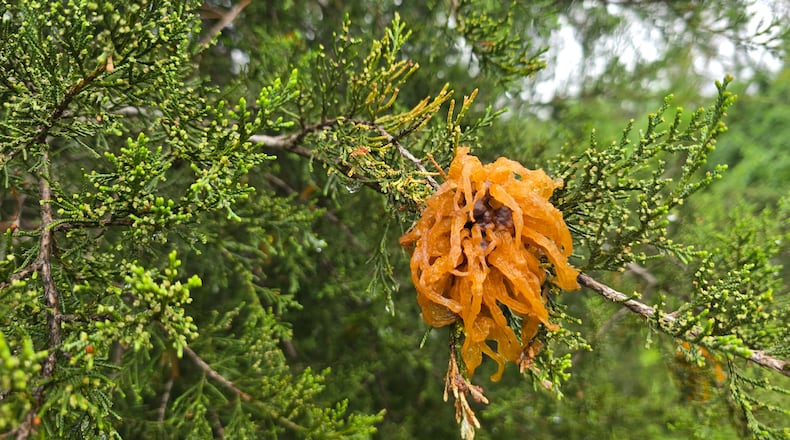The goal is to have healthy soil. Gardeners work hard to improve the soil by adding compost and other organic materials. This improves drainage and provides air space for healthy root growth.
Working in wet soil destroys soil structure. Soil structure is the combination of soil particles into groupings or aggregates. Aggregates allow for good drainage and air space.
Over-tilling the soil destroys soil aggregates. Working in wet soil leads to the destruction of aggregates and causes compaction.
Clods or chunks of soil are formed, which makes it difficult for roots to penetrate. Air spaces are eliminated, which prevents healthy root growth.
I know gardeners are excited to plant this weekend but stop and check the soil before doing so. Save yourself from problems this summer!
A plant problem that is showing up because of the wet weather is the cedar apple, hawthorn and quince rust complex on a variety of plants.
These diseases have life cycles that require two different host plants to survive. Cedar apple rust occurs on apples and crabapples.
What to look for
Symptoms include leaf spots and black dots on the fruit surface.
The alternate host for cedar apple rust is juniper, primarily the Eastern red cedar (Juniperus virginiana). This week, the galls formed in the fall enlarged to produce orange gummy masses with tentacles.
Apples and or crabapples are one host, and the juniper is the other. Both are required for this disease to complete its life cycle.
Cedar hawthorn rust alternate hosts are junipers (primarily Eastern red cedar) and hawthorn, apple, crabapple, serviceberry, quince, and pear.
The symptoms of the deciduous plants are leaf spots and fruit infection. The symptoms on the juniper are small galls on the stem that emerge as small orange, gummy blobs, like cedar apple blobs, but are smaller and with shorter tentacles.
Finally, cedar quince rust affects many plants in the rose family, including apples, crabapples, pears, hawthorns, and serviceberries. Symptoms on these plants are whitish tubes on the fruit, which, when mature, release bright orange spores.
The symptoms of cedar quince rust on the juniper are the orange gummy blobs on the branches along the stems. However, these are much smaller than the other two.
Other than the orange spores that are eventually released, these diseases don’t normally kill plants. The orange blobs on the junipers are quite interesting.
If you have both host plants, the disease cycle will continue. It’s particularly prevalent during this wet weather. Removing the junipers (Eastern red cedar) helps to reduce the potential for the disease. Fungicides aren’t recommended.
Pamela Corle-Bennett is the state master gardener volunteer coordinator and horticulture educator for Ohio State University Extension. Contact her by email at bennett.27@osu.edu.
About the Author

